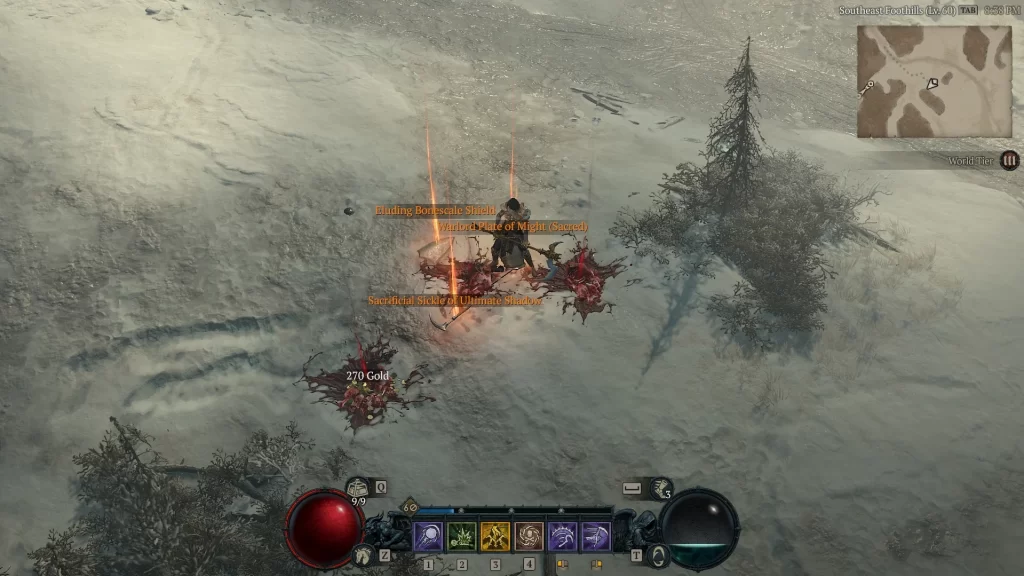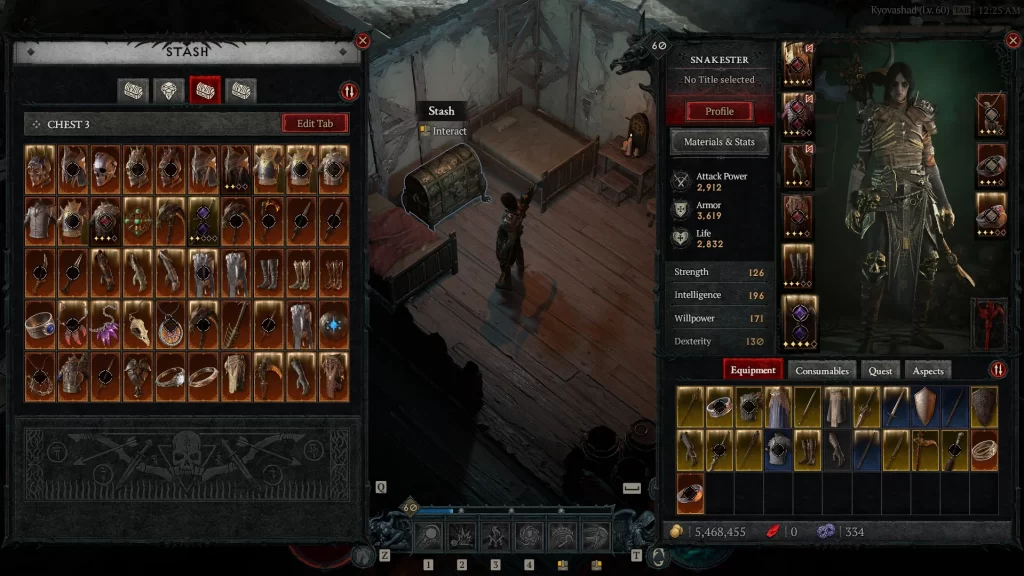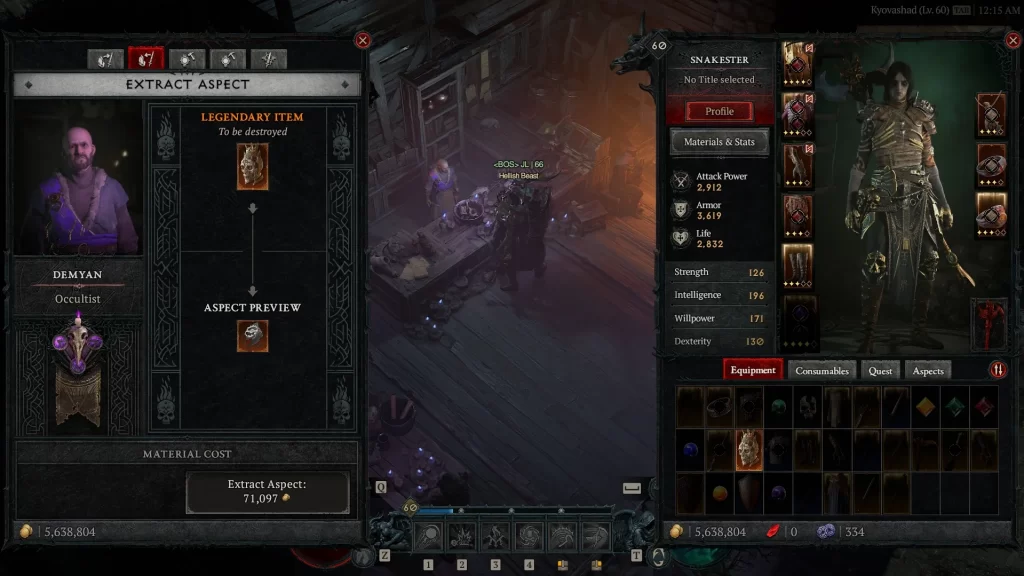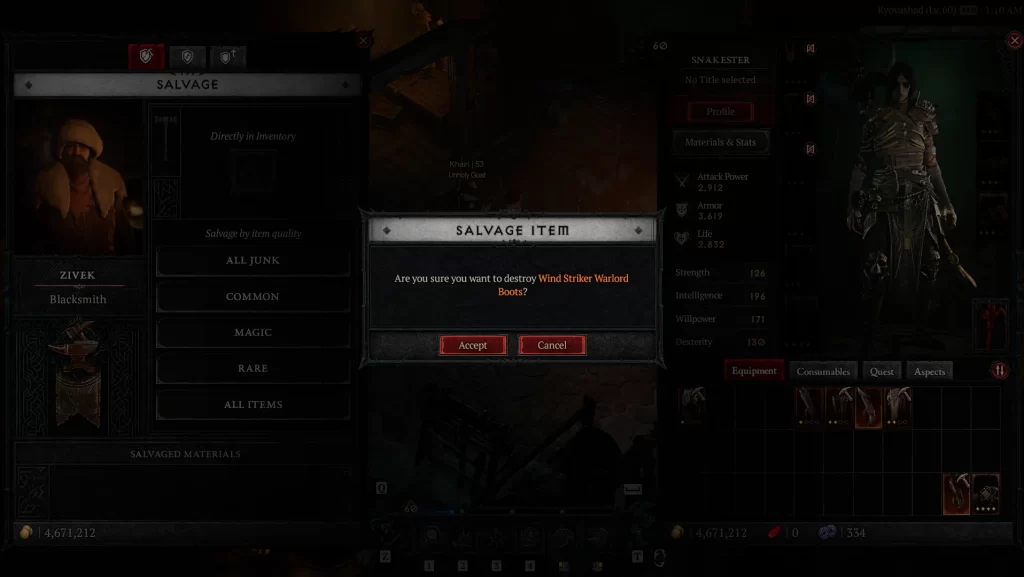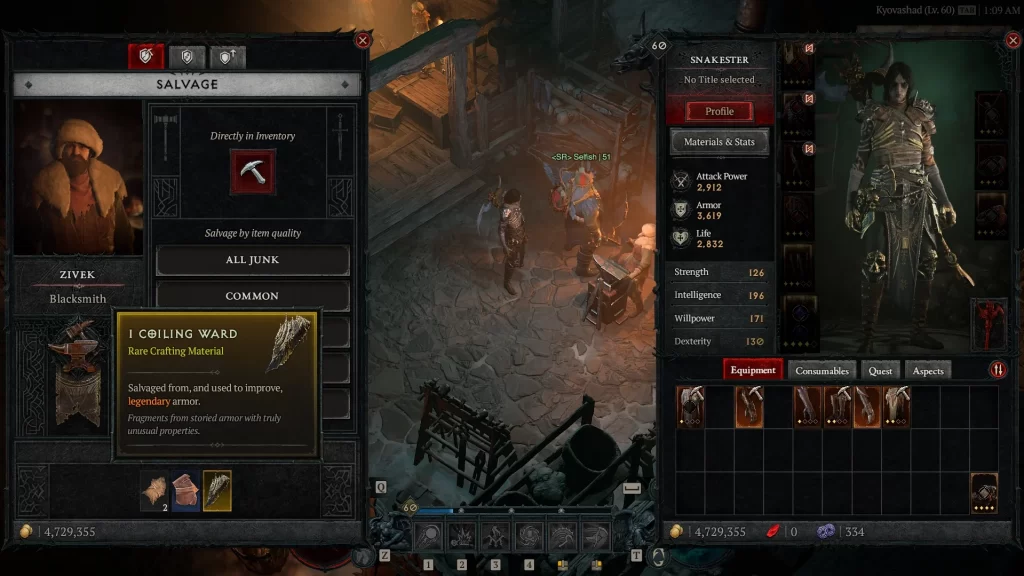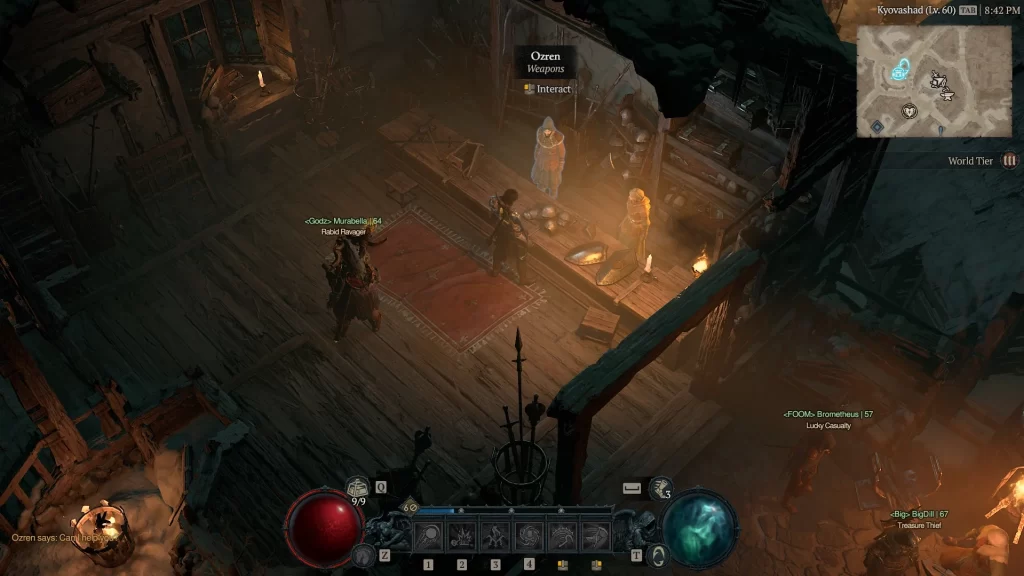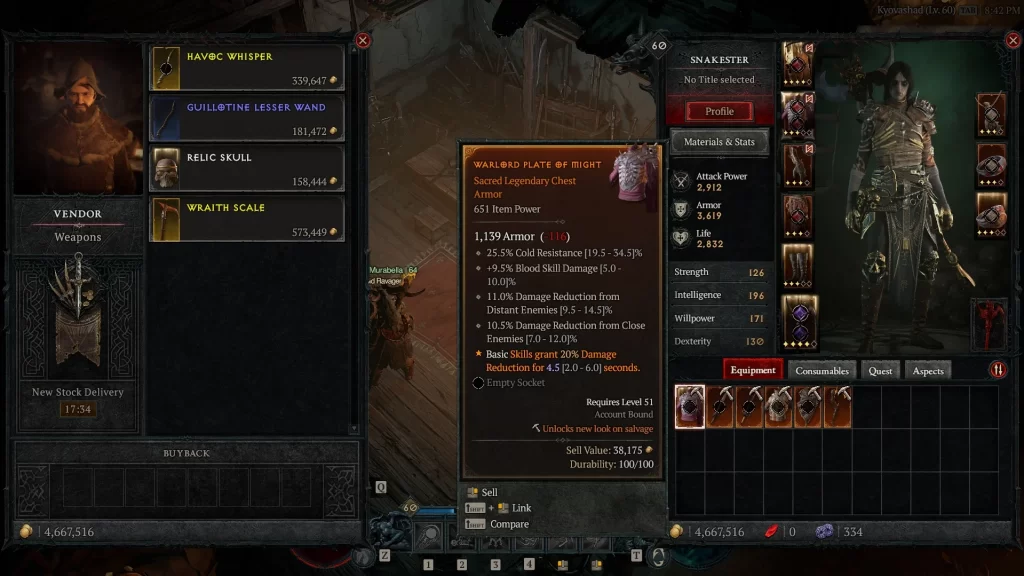Getting your first few legendary items in Diablo 4 is always exciting. Especially when it’s for a skill that you’re currently using. But what do you do once you’re getting legendaries nonstop and no longer have anywhere to put them? We’re here to answer what to do with legendaries as you get deep into Diablo 4.
It’s tricky at first since you’ll feel the need to keep every single one you get. Personally, I love throwing them into my stash just in case one is perfect for a new build I want to try. Even if resetting skills can be annoying. But even then, you still have to figure out what to do with the gear you’re out-leveling.
What to Do With Legendaries in Diablo 4
Storing Your Items and Buying Extra Tabs
There are a few options if you’re running out of space or worried about doing the wrong thing with a legendary. First, you can always buy a few extra stash tabs for more storage. But, it’s still easy to fill it up fast between gems and any other items you may want to store. Such as endgame Nightmare Sigils or even Aspects which we’ll dive into next.
The disappointing thing about stash tabs in Diablo 4 is that they’re limited. By default, you start with one tab but you can buy an extra three. At that point, you’re stuck and can only hope that maybe Blizzard will add more later.
Extracting Aspects from Legendaries
This option will likely be your most common choice when deciding what to do with legendaries. Once you’ve unlocked the Occultist NPC in any major town, you can start extracting aspects. We have a guide on How to Use Aspects that explains how it works in-depth.
With that said, the quick explanation is that you can spend a good chunk of gold to remove the legendary affix from an item. This essentially salvages it even though you won’t get materials as you would at a Blacksmith. So make sure you’re okay with completely losing that item.
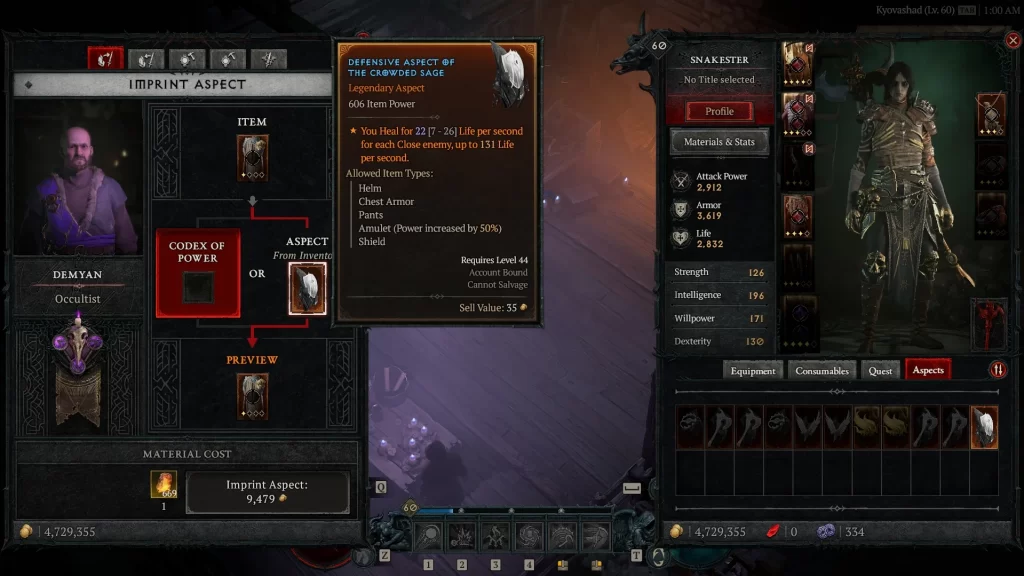
It’s worth mentioning that the stat roll an item has is what the extracted aspect will be when imprinting it.
After extracting an aspect, you can then place it on certain gear via “Imprinting”. This is one way to imprint new legendary affixes onto gear. Our other guide mentioned above discusses how the Codex of Power works as well. Regardless, once you have an aspect you’ve extracted, it’ll go into your Aspects inventory tab. Also, each aspect will have a quality such as normal, sacred, or Ancestral.
It’s important to note that this inventory tab is also limited so you may eventually run out of space. If you’d like, you can toss these into your stash as well. Assuming you haven’t filled that with a ton of legendary items already!
Salvaging For Materials and Transmogs
Now what about when your stash is full and your inventory tab for aspects is too? It’s time to pay the blacksmith a visit and start salvaging those legendaries for materials. Plus, you’ll also get a transmog if you want to make your character look fancy.
It’s worth salvaging low roll items that you won’t bother using since you’ll get useful materials from them. These are required for upgrading legendary items when you get into the higher upgrade tiers. For example, one legendary weapon I have started requiring Baleful Fragments for the fourth upgrade tier.
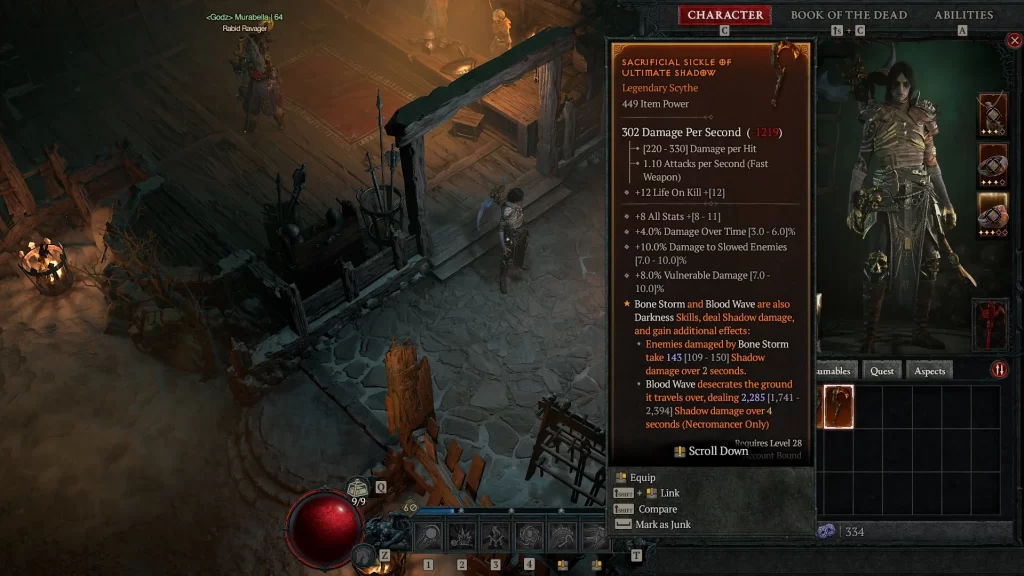
If you want to check the roll of each stat/affix, you can enable this setting in Options -> Gameplay -> Advanced Tooltip Information.
One annoying thing about salvaging legendaries is that you aren’t guaranteed to get legendary materials. There’s still a chance you’ll only get low-tier materials instead. Regardless, depending on what legendary item type you salvage, you’ll get different materials. Here’s a quick bulleted list showing the types:
- Weapons – Baleful Fragments
- Armor – Coiling Wards
- Jewelry – Abstruse Sigil
For those of you having trouble salvaging legendary items, don’t worry. I’ve noticed some players trying to use the “Salvage by Item Quality” buttons. These won’t work for legendaries unless you’ve marked them as junk. This is because they’re not included in the rarities/qualities shown. And they don’t count for the “All Items” button.
Otherwise, you can click the big red pickaxe button on the salvage page and directly salvage items. For more a more in-depth walkthrough, visit our guide on How to Salvage Items in Diablo 4.
Don’t Bother Selling Legendary Items
The final thing you can do with legendaries aside from not picking them up is to sell them. I highly don’t recommend doing this since you’ll barely get any gold for doing it. For example, I have legendary items within the level 40 to 50 range that sell for 30k to 50k gold.
Considering you can make that gold from the bajillion rare(yellow) items Diablo 4 throws at you, it’s not worth it. You can instead salvage them or get the aspects as previously mentioned. Chances are more likely you’ll need either of the two for making a build later on.
That’s pretty much all there is to this Diablo 4 guide on what to do with legendaries. Once you complete the campaign and raise the World Tier up to 3 you’ll get them all the time. Especially if you participate in certain activities where they drop often. This is when it starts to get tough to hold onto them all.

Jeff is a journalist with over 10 years of experience writing, streaming, and making content about video games. With an associate degree in journalism, he’s a sucker for RPGs, survival games, roguelikes, and more.

